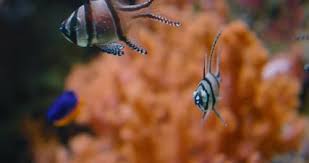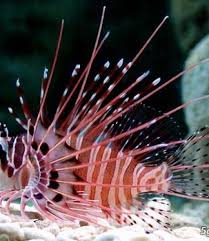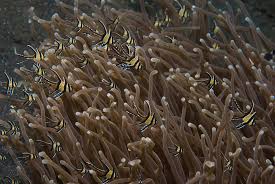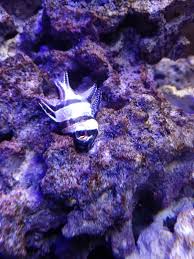The dragon (龙 – Lóng) is one of the most revered symbols in Chinese culture, mythology, and spirituality. Unlike the fearsome dragons of Western legends, the Chinese dragon is seen as a benevolent, wise, and powerful force associated with cosmic balance, imperial authority, and the essence of life itself. Among its many symbolic meanings, the dragon is closely linked to longevity and eternity, concepts that hold immense importance in traditional Chinese beliefs and rituals.
Throughout history, Chinese emperors, scholars, and spiritual practitioners have performed rituals honoring the immortality of the soul, the continuity of dynasties, and the pursuit of a long and prosperous life. Dragons often played a central role in these ceremonies, serving as divine mediators between heaven, earth, and humanity. This article explores how dragons are integrated into longevity rituals, ancestral worship, and spiritual traditions that celebrate eternal life.
1. The Symbolism of Dragons in Longevity and Immortality
1.1 Dragons as Cosmic Beings Representing Eternal Life
In Chinese cosmology, the dragon is seen as a creature of divine origin, ruling over water, wind, and celestial forces. It is often depicted as an immortal being that exists beyond the constraints of time, embodying the idea of continuity and everlasting existence.
- The Azure Dragon (青龙 – Qīng Lóng), one of the Four Divine Beasts, is linked to the cycle of life, renewal, and the eternal flow of Qi (气 – life energy).
- Dragons are believed to reside in celestial realms, controlling the elements and ensuring the balance of nature, which is essential for sustaining life.
- The endless, coiling form of the dragon symbolizes infinity, reinforcing the idea that life is an unbroken cycle rather than a finite existence.
Thus, dragons naturally became sacred symbols in rituals celebrating longevity, immortality, and the harmony between generations.
1.2 The Connection Between Dragons and the Daoist Quest for Immortality
In Daoist (Taoist) philosophy, achieving immortality (长生 – Chángshēng) is a spiritual pursuit that involves aligning oneself with the cosmic flow of Qi. Daoist legends describe immortals (仙 – Xiān) who have transcended human limitations by mastering the secrets of nature, often through alchemy, meditation, and interaction with celestial dragons.
- Some Daoist masters were believed to have ridden dragons to the heavens, symbolizing their ascension to eternal life.
- The “Dragon Gate” (龙门 – Lóng Mén) is a metaphor for spiritual transformation—it is said that carp that successfully leap over the Dragon Gate become dragons, achieving immortality.
- In Daoist temples, dragon motifs adorn sacred altars and ritual objects used in ceremonies aimed at prolonging life and ensuring eternal wisdom.
Because of this, dragons became integral to longevity rituals, serving as guides that help believers achieve spiritual enlightenment and escape the cycle of mortal existence.
2. Rituals Honoring Longevity and the Presence of Dragons
2.1 The Role of Dragons in Birthday Celebrations for the Elderly
In traditional Chinese culture, birthdays of elderly individuals—especially the 60th, 70th, 80th, and beyond—are considered grand celebrations of longevity. These occasions involve elaborate ceremonies where dragons are prominently featured.
- Dragon dance performances are held to bring blessings of health and vitality.
- Decorative cakes shaped like dragons and peaches of immortality (寿桃 – Shòutáo) are prepared as offerings.
- Elders are given scrolls with dragon motifs, symbolizing that they are as wise and long-lived as the mythical creature.
In these celebrations, the presence of dragons represents a wish for continued life, prosperity, and eternal blessings for the elderly.
2.2 Dragons in Ancestral Worship and Prayers for Eternal Lineage
In Confucian traditions, honoring one’s ancestors is essential to maintaining family harmony and ensuring the continuation of the bloodline. Dragons play a key role in these ancestral ceremonies, which often include:
- Dragon-shaped incense burners in ancestral halls, used to send prayers to deceased family members.
- Offerings of dragon-engraved jade amulets, symbolizing the family’s unbroken legacy.
- Ritual chants invoking the protection of celestial dragons, ensuring that future generations inherit the wisdom and virtues of their ancestors.
These practices reinforce the idea that dragons preserve the essence of family unity and spiritual immortality, allowing the past, present, and future to remain connected.
2.3 Dragons and Imperial Longevity Rituals
Chinese emperors, regarded as the “Sons of Heaven” (天子 – Tiānzǐ), often performed sacred rituals to ensure their long reign and the eternal survival of their dynasty. These rituals took place in temples adorned with golden dragon imagery, emphasizing the ruler’s divine connection to eternity and cosmic order.
- At the Temple of Heaven (天坛 – Tiāntán), emperors conducted ceremonies asking the celestial dragons to bless them with long life and wisdom.
- Dragon robes (龙袍 – Lóng Páo) were worn by emperors, with golden scales symbolizing eternal rule.
- Sacred dragon pillars were erected in palaces to mark the emperor’s status as a living representation of the dragon’s unending power.
These traditions reinforced the belief that the emperor’s fate was tied to the dragon, ensuring dynastic continuity and the everlasting prosperity of the empire.
3. Dragons in Art and Literature: Symbols of Longevity and Eternity
3.1 Dragon Motifs in Calligraphy and Scroll Paintings
Many ancient Chinese paintings and calligraphy scrolls depict dragons among clouds, waterfalls, and pine trees, all of which are associated with longevity.
- Pine trees represent resilience and long life, while dragons symbolize the eternal spirit.
- Waves and clouds around dragons indicate the flow of time and the unceasing rhythm of the universe.
- Calligraphy featuring dragon-inspired characters is often displayed in homes to bless the residents with longevity and happiness.
These artistic traditions reflect the cultural integration of dragons with the pursuit of eternal life.
3.2 Dragons in Classical Poetry and Literature
Classical poets often used dragons to express the longing for immortality:
- Qu Yuan (屈原), a famous poet of the Warring States period, wrote about dragons guiding sages to the heavens, symbolizing spiritual transcendence.
- Tao Yuanming (陶渊明), a poet of the Eastern Jin Dynasty, described the peaceful coexistence of dragons and wise rulers, signifying harmonious, eternal governance.
- Daoist texts frequently reference dragons as keepers of the elixir of immortality, hidden in mystical mountain caverns.
These literary works reinforce the dragon’s role as a guardian of eternal wisdom and longevity.
Conclusion: The Everlasting Legacy of Dragons in Longevity Rituals
From imperial ceremonies to ancestral worship, birthday celebrations to Daoist spiritual quests, the dragon remains an essential figure in rituals celebrating longevity and eternity. It serves as a bridge between the human world and the divine realm, guiding individuals and dynasties toward enduring prosperity, wisdom, and immortality.
Even today, dragon imagery continues to inspire art, literature, and cultural traditions, reminding people of the timeless values of perseverance, balance, and eternal harmony. In honoring dragons, we honor the pursuit of life itself—unbroken, limitless, and everlasting.










